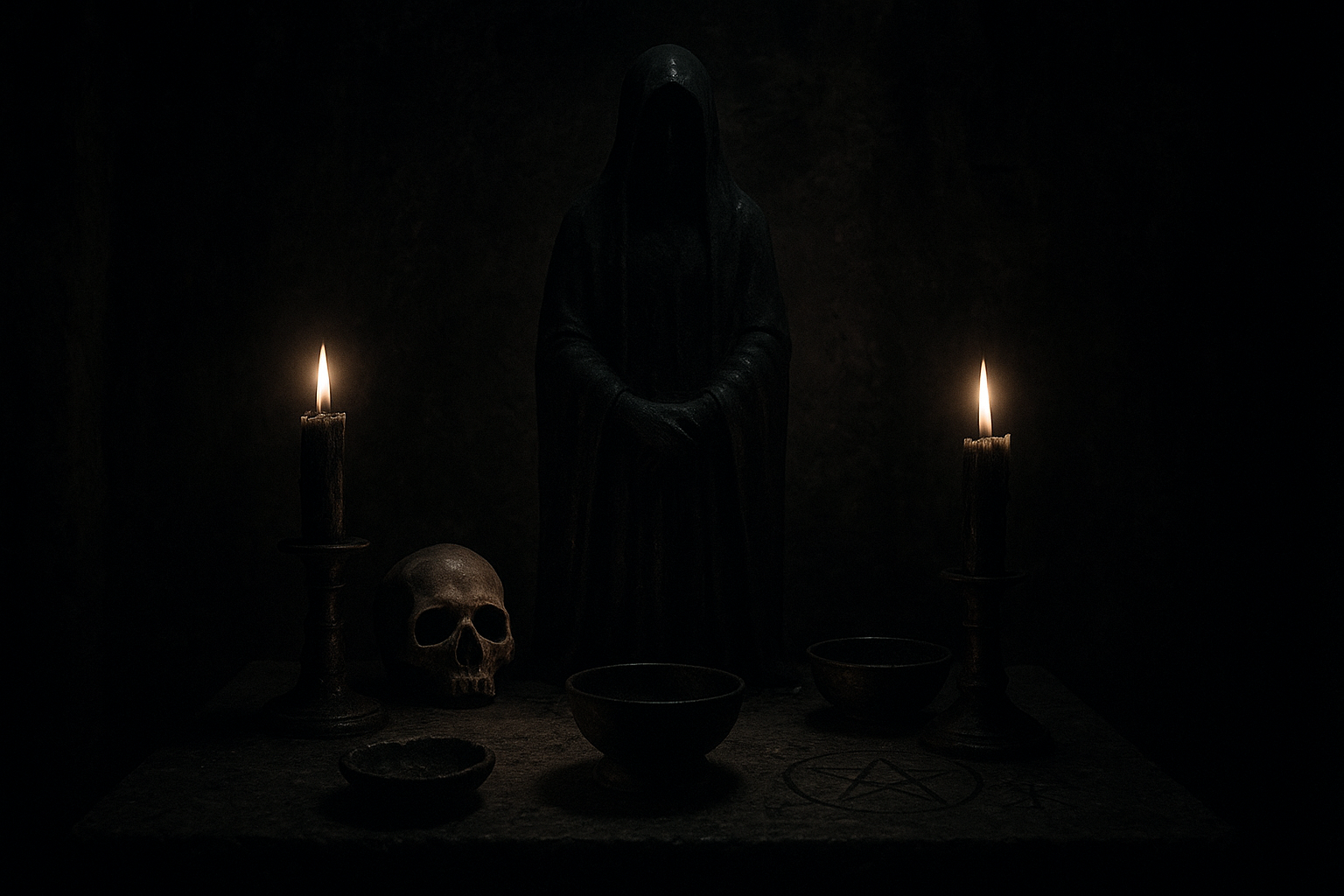Shadowed Altars – Darkness in Ritual Practice
Throughout history, rituals have played a significant role in human culture. They are events imbued with symbolism, tradition, and often, a sense of the mystical. Across civilizations, rituals have provided structure, meaning, and a sense of order. However, alongside the light-filled ceremonies etched in vibrant recollection, there exists a fascination with darkness in ritual practice. These darker rituals are often shrouded in mystery, fear, and misunderstanding.
The Mystique of Darkness in Rituals
Darkness, both literal and metaphorical, has often been associated with the unknown, the feared, and the revered. Many cultures have used darkness in rituals to symbolize mystery, the afterlife, and the realm beyond the human realm. Anthropologist Victor Turner described rituals as transformative processes, sometimes involving the liminal space, the in-between state of normality and the unknown. This in-between can often involve elements of darkness, representing a disconnection from reality and a passage to a deeper understanding.
Historical Contexts
Historical evidence of the use of darkness in rituals can be found across different cultures and religions:
- Ancient Egyptians: In ancient Egypt, darkness played a crucial role in rituals honoring Osiris, the god of the afterlife. The Rites of Osiris were performed in darkened chambers, symbolizing the journey to the underworld.
- Greek Mysteries: In the Greek Eleusinian Mysteries, initiates experienced rituals in complete darkness, symbolizing death and rebirth, to understand the secret rites of Demeter and Persephone.
- Norse Traditions: In Norse traditions, the long nights of winter were seen as the time of spirits and darkness, where rituals such as Blót would be performed to honor and appease the gods and ancestors.
The Role of Darkness in Modern Rituals
Modern interpretations of ritualistic darkness continue to captivate and offer insights into human psychology and spirituality. Today, certain practices still seek the veil of night to enhance the spiritual atmosphere:
- Wicca and Neo-Paganism: These modern spiritual paths often celebrate rituals known as Esbats, which occur on full moons and incorporate rituals during the night.
- Shamanic Practices: In many shamanic traditions, the use of darkness is a gateway to deeper consciousness. The absence of light enables practitioners to connect more profoundly with inner visions and spiritual guides.
Exploring the Psychological Dimension
Darkness in rituals also bears significant psychological implications. The absence of light heightens other senses, drawing participants inward. Renowned psychoanalyst Sigmund Freud proposed that the unconscious mind reveals itself in the absence of sensory interference, which darkness can provide. Thus, rituals conducted in darkness can facilitate self-discovery and revelation.
“For the unconscious is the true psychical reality; in its innermost nature it is as much unknown to us as the reality of the external world, and it is as incompletely presented to us by the data of consciousness as is the external world by the communications of our sense organs.” – Sigmund Freud
Cultural Misunderstandings and Misconceptions
Despite its profound role, darkness in rituals often suffers from cultural misconceptions. The westernization and demonization of certain rituals have led to an association of darkness with evil or maleficent forces. This view overlooks the richness of darkness as a cultural symbol and its practical value in spiritual practice.
For instance, the Hollywood portrayal of witchcraft often emphasizes the malevolent aspects, overshadowing the positive and healing aspects practiced by many Wiccan groups. This misleading representation perpetuates fear and misunderstanding about the complexity and purpose of these rituals.
The Contrast and Balance
Just as light plays a crucial role in rituals, so does darkness. The Yin and Yang philosophy, which is deeply embedded in Chinese tradition, exemplifies this balance. Just as light defines darkness, it emphasizes that understanding spiritual wholesomeness requires acknowledging both aspects.
Moreover, the balance of light and dark in rituals can teach valuable lessons about the importance of harmony and acceptance in life. It challenges individuals to confront their fears of the unknown and embrace the transformative journey offered by the darkness.
Conclusion
Shadowed altars and dark rituals offer a profound glimpse into the human consciousness and the complex nature of spirituality. They remind us that darkness does not inherently equate to negativity; instead, it holds the potential for transformation, exploration, and balance.
As we continue to evolve in our understanding of these practices, it is crucial to approach them with openness, curiosity, and respect. Understanding the history and cultural significance of darkness in rituals can lead to a more holistic comprehension of the very nature of human spirituality.
Explore further insights and historical references in literature and online resources such as JSTOR and The Atlantic for a deeper understanding of this intriguing subject.

Comments